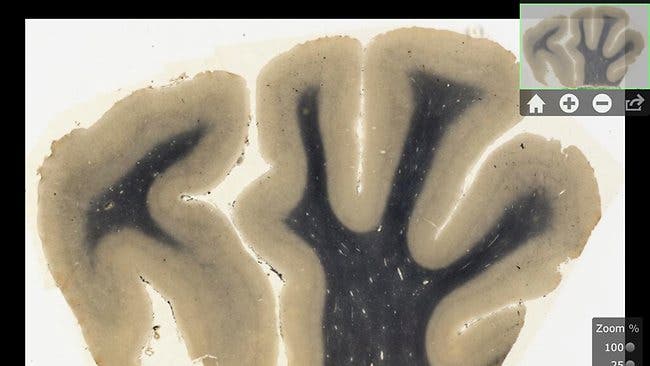
After the most recognized physics figure in the world, Albert Einstein, past away on April 18, 1955, the whole world was left in shock, seeing how he was even by then considered the most famous physicist in history. His dying wish was that of being cremated, however an eccentric physician by the name of Thomas Harvey, a Princeton Hospital pathologist, removed Einstein’s brain without any kind of permission, either from the authorities or Einstein’s family. He quickly sliced Einstein’s brain in 200 cubes and left them in formaldehyde for preservation. Now, 57 years after Einstein’s passing, the same slices were sampled, scanned, digitized and made available to general public under the form of an iPad app.
Yup, you’ve heard it right – Einstein’s grey matter is now on iPad, and while some of you might rejoice at the thought of exploring through one of humanity’s greatest minds, some might find it offensive. Whatever may be the case, it’s done and over. Einstein’s brain walk-through was made after 350 brain slices taken from the collection bequeathed to the National Museum of Health and Medicine Chicago by the Einstein family estate in 2010 were digitized.
Now, the view itself is extremely interesting as you might imagine, just like you’d observe the slices by a microscope, however they’re no where near as detailed as modern brain scans via MRI’s, which can render a 3-D model. So, while things like cellular structure and tissue definitions are clearly visible, the developers didn’t highlight which parts of the brain you’re looking at.
Possibly the world’s greatest mind
Was Einstein’s brain different from the typical human one, though? Well, an investigation led by Harvey himself, whose results were subsequently published in the journal Lancet in 1999, found that Einstein’s parietal lobe, the part of the brain associated with our processing of mathematics, language, and spatial understanding, was 15 percent wider then normal. Also, small parts of Einstein’s brain were missing according to Harvey’s slices, like the Sylvian fissure and parts located in the frontal lobe.
According to Sandra Witelson, who worked on the paper, “This unusual brain anatomy may explain why Einstein thought the way he did… Einstein’s own description of his scientific thinking was that words did not seem to play a role. Instead he saw more or less clear images of a visual kind”.
The new iPad app may allow researchers to dig even deeper by looking for brain regions where the neurons are more densely connected than normal, said Dr. Phillip Epstein, a Chicago-area neuroscientist and consultant for the museum
It’s not clear whether these physical discrepancies helped Einstein develop such a powerful intellect, still considering his brain is now freely available to the public – well, sort of, since the app is priced at $9.99 – scientists from all over the world may study it and possibly find hints that suggest a superior mind.
via Wired






